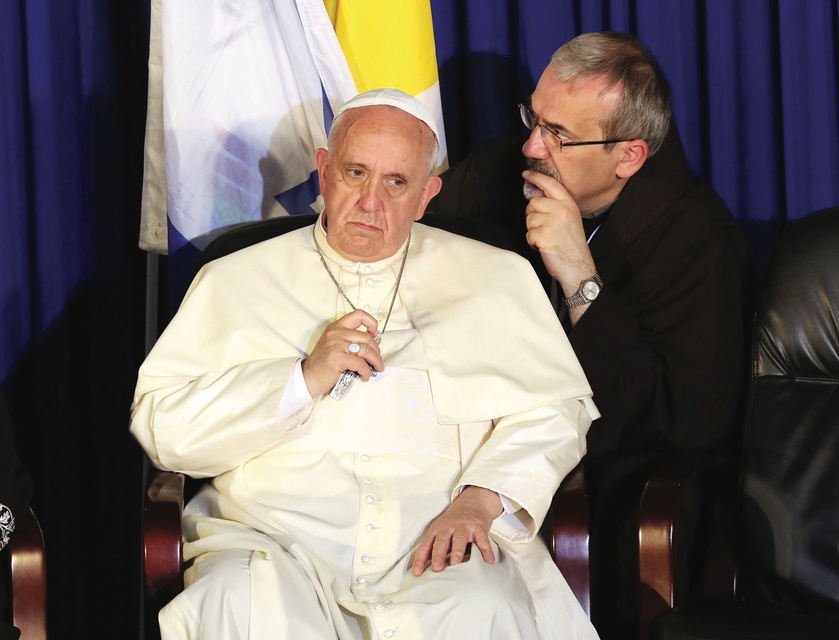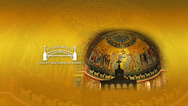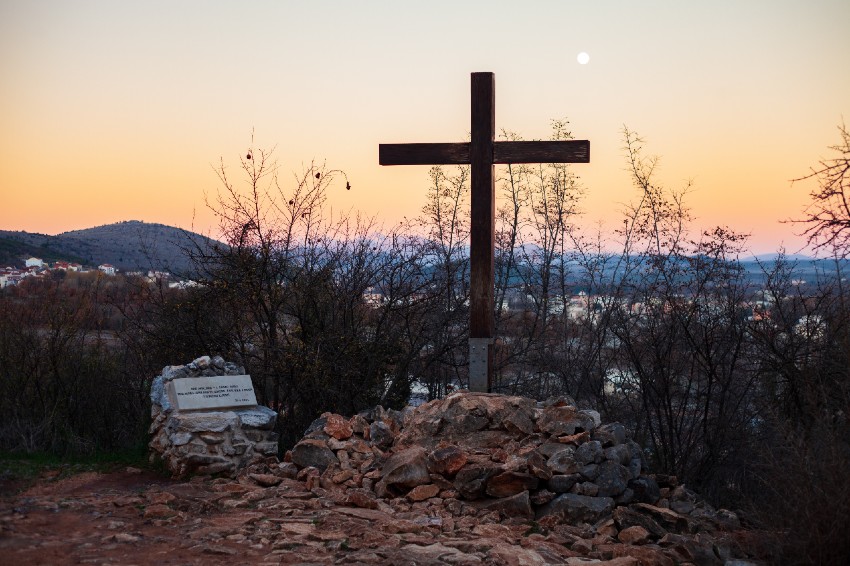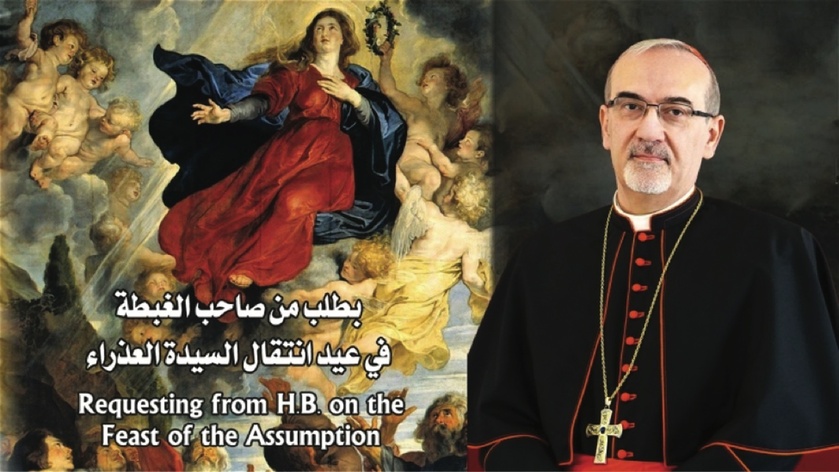Letter 32, 2024, Fri, Sept 20: Vatican on Medjugorje
“I have presented myself here as the Queen of Peace to tell everyone that peace is necessary for the salvation of the world. Only in God can you find true joy, which is the source of true peace. Therefore, I ask for conversion.” —Words attributed to Our Lady of Medjugorje, speaking to the children of the town on June 16, 1983
“You are not here to verify,
Instruct yourself,
or inform curiosity
Or carry report.
You are here to kneel
Where prayer has been valid.”
–T.S. Eliot, Little Gidding, The Four Quartets
Letter #32, 2024, Friday, September 20: Vatican on Medjugorje
I am in Medjugorje, and was here yesterday, September 19, when the Vatican released a Note About the Spiritual Experience Connected with Medjugorje.
The text was prepared by the Dicastery for the Doctrine of the Faith (DDF), approved by Pope Francis on August 28, and presented yesterday during a press conference at the Vatican.
The Note, which is quite long (over 10,000 words), recognizes various “positive fruits” associated with Medjugorje, which “are most evident in the promotion of a healthy practice of a life of faith, in accordance with the tradition of the Church.”
As such, the DDF has granted a “Nihil obstat” (literally, “Nothing stands in the way”) to “the spiritual phenomena of Medjugorje,” in accord with another document issued earlier this year, Norms for Proceeding with in the Discernment of Alleged Supernatural Phenomena.
According to this earlier document, a “Nihil obstat” means:
“Without expressing any certainty about the supernatural authenticity of the phenomenon itself, many signs of the action of the Holy Spirit are acknowledged ‘in the midst’ of a given spiritual experience, and no aspects that are particularly critical or risky have been detected, at least so far. For this reason, the Diocesan Bishop is encouraged to appreciate the pastoral value of this spiritual proposal, and even to promote its spread, including possibly through pilgrimages to a sacred site.”
Thus, the Note says “the Nihil obstat indicates that the faithful can receive a positive encouragement for their Christian life through this spiritual proposal, and it authorizes public acts of devotion. Such a determination is possible insofar as many positive fruits have been noted in the midst of a spiritual experience, while negative and dangerous effects have not spread among the People of God.”
At the same time, it observes:
“Evaluating the abundant and widespread fruits, which are so beautiful and positive, does not imply that the alleged supernatural events are declared authentic. Instead, it only highlights that the Holy Spirit is acting fruitfully for the good of the faithful ‘in the midst’ of this spiritual phenomenon of Medjugorje. … Moreover, the positive assessment that most of the messages of Medjugorje are edifying does not imply a declaration that they have a direct supernatural origin. Consequently, when referring to ‘messages’ from Our Lady, one should always bear in mind that they are ‘alleged messages.'” (Emphasis added)
The Note is signed by Cardinal Víctor Manuel Fernández, prefect of the DDF, who spoke at length during the press conference yesterday in order to provide “some explanations that can help to grasp better the meaning of the decision taken,” he said.
My own experience here…
While all of this was being discussed in Rome, I was here in Medjugorje.
During the morning, in fact, I was in the home of Ivanka Ivankovic-Elez, one of the six alleged seers, who was 15 years old when the alleged apparitions began (1981) and is now 58.
In the evening, I had dinner with Archbishop Aldo Cavalli, an Italian prelate who was appointed Apostolic Visitor to Medjugorje by Pope Francis in November of 2021 (link). He arrived the following February, on the feast of Our Lady of Lourdes (February 11, 2022), and remains there to this day (see here for his first homily in Medjugorje, and here for an interview with His Excellency).
And so, my thoughts today moved through a series of points, pro and con, back and forth, as follows:
1) There has been a great controversy about Medjugorje; the local bishop and many observers have doubted the authenticity of the apparitions, to the point of saying it is impossible that they are authentic;
2) yet, millions have journeyed here, and the village is the scene of packed Masses and long lines before confessionals, and hikers struggling to climb the rocky Apparition Hill and the still higher Cross Mountain;
3) still, many have warned that, if the apparitions are even a little bit fraudulent, an invention of the children’s minds, the phenomenon ought to be denounced, not tolerated;
4) and yet, the pilgrims have continued to come, in their millions; the melodious sounds of “Ave Maria” are heard in the guesthouses and streets and around the blue crosses which mark the sites of the alleged first apparitions in 1981; many who came here in pain and despair have been comforted and filled with new hope; raising the question: can the devil really work in such a powerful way against himself? If yes, how can his kingdom stand?
5) Still, despite all this, some of the phrases attributed to the Blessed Mother do seem questionable, as if not appropriate for her, or not theologically correct, especially when speaking quite favorably, as she seems to speak in the words attributed to her, of other religions. This leads some to warn that the entire affair is an exceedingly insidious deception, with the appearance of piety and a certain orthodox content, but tarnished and indeed poisoned by these phrases, which the critics warn must be rejected at all costs — even at the cost of forbidding millions to come here to draw close the Blessed Mother, and to Christ, and to conversion of life through repentance for sin.
6) Yesterday, when I saw the visionary Ivanka speak to our group of pilgrims for almost 30 minutes — standing so close to her that I could see the first wrinkles on the face of a woman who says she first saw the Virgin 43 years ago — I was moved by her narration of those events… (and here I summarize and condense): the children saw lights in the air… on the forested hillside… they went toward them… they saw the face of a young woman… the young woman “spoke” to them. In their understanding, the words they “heard” were: “I am the Queen of Peace.” And so it began… Ivanka spoke quietly. Of course, she has told this story before, innumerable times. Yet I had no impression of a woman inventing a memory, or of someone who was telling tales. “This is what happened to us,” she said. “This is what we saw and heard.”
7) And so, at dinner last night, I asked Archbishop Cavalli — who told me he has met with Pope Francis several times, and that Francis told him that he had decided he wished to protect and increase, if possible, the good spiritual fruits of Medjugorje — what can we make of such negative facts as the seeming immorality of one of the priests who early on took the children under his wing, or of the reported questionable phrases of the Virgin.
And the archbishop replied, to my first question, that humans (like that priest) may fall, and that sin catches us quickly, and yet, rather than allowing such sins to invalidate the apparitions, the fact that the apparitions continued despite such actions may be considered in some way a confirmation that something spiritually positive overcame the negative and sinful.
And, he added, in answer to my second question, Vatican officials poured over the reported words of Our Lady, and after careful review, found nothing directly opposed to the faith. “They did a very good and thorough work,” he said to me.
8) And yet… how could even a single phrase, if authentic, contain an ambiguity which might, read in a certain way, suggest a non-Catholic teaching or concept?
Here we come to the crux of the matter — the cross of the matter.
By this I mean, that the Vatican took the choice to not confirm any of the sayings, even any of the apparitions, leaving every doctrinal issue contained therein to one side, focusing only on the fruits:
Do people come here seeking God and Jesus Christ?
Do they pray?
Do they go to confession?
Do they make commitments to change their lives?
Do they carry out such commitments?
The answers to each of these questions, the Vatican said yesterday, are all “Yes.”
And therefore the Vatican has now stated that there is no objection to having pilgrims continue to come here.
Where prayer has been valid…
So my conclusion: prayer, when sincere, is valid, and it may be valid in Medjugorje, where millions have come to draw closer to God.
The poet T.S. Eliot spoke of this eloquently in his poem The Four Quartets, which is ultimately about how man may draw close again to God.
Here are some lines from an essay by Fr. Aidan Kimel (link) which seemed to me to offer insight into this matter, beginning with a citation from T. S. Eliot’s poem:
If you came this way, / Taking any route, starting from anywhere, / At any time or at any season, / It would always be the same: you would have to put off / Sense and notion. You are not here to verify, Instruct yourself, or inform curiosity / Or carry report. You are here to kneel / Where prayer has been valid. And prayer is more / Than an order of words, the conscious occupation / Of the praying mind, or the sound of the voice praying. / And what the dead had no speech for, when living, They can tell you, being dead: the communication / Of the dead is tongued with fire beyond the language of the living. / Here, the intersection of the timeless moment / Is England and nowhere. Never and always.
It is always the same, T. S. Eliot tells us. If we would find “the still point of the turning world,” we must “put off / Sense and notion.”
Our minds are busy with the chatter of the world; we live in a non-stop cocktail party of impassioned thoughts. They demand our attention, drain our energy, and inflame our disordered desires. In the Orthodox ascetical tradition, they are called logismoi. In his informative introduction to Athonite spirituality, The Mountain of Silence, Kyriacos Markides asks a respected monk to explain the origin and nature of logismoi. Fr Maximos replies:
There was a time when the first humans lived in full accordance to their true nature. In such a state all their energy, all their powers, were totally harmonized and focused around one motion, the motion toward God. Their nous, that is, their heart and mind, had but a single and exclusive preoccupation, ceaseless prayer. At that state their sole experience and focus was what the elders call the Theoria, that is, the vision of God.
Adam and Eve, as the primordial humans, disrupted this relationship of oneness with God through the Fall. They consequently became trapped and entangled within this world of three dimensions of matter, of egotistical passions, of sin. They ceased being in a constant prayerful state, their essential and true function by nature. The entire Creation suffered as a result of this split between humanity and God. So what we now have is this phenomenon of the ceaseless production of logismoi instead of ceaseless prayer. The logismoi are alien to our original condition, to the original working of our nous. The moment we were cut off from God, we entered into a state of existence dominated by worldly concerns, by logismoi. Our nous became scattered to the things of this world. (p. 121)
The cocktail party of thoughts is the norm for fallen human beings. It both causes and sustains our alienation from God. Thinking, thinking, thinking; words, words, words; noise, noise, noise.
We are trapped in the chatter.
Whether we will or not, the thoughts invade our consciousness.
We experience them as originating outside ourselves.
Even when we are sleeping, the barrage of logismoi continues.
Satan attacks us through the noise.
Evagrius analyzed and famously classified the negative logismoi under eight principal thoughts—gluttony, fornication, avarice, anger, despondency, acedia, vainglory, and pride (see Evagrius Ponticus).
Fr. Maximos compares these thoughts to injections of poison that spread throughout our system: “Your spiritual world becomes contaminated and you are affected on a very deep, fundamental level. Your entire spiritual edifice can be shaken from its very foundation. Sometimes the intensity of a single logismos is so great that human beings under its spell may feel totally helpless” (p. 119).
To break up this party of logismoi, we must intentionally cultivate an interior silence that makes possible, and indeed is, communion with the Eternal. As St. John of the Cross teaches: “The Father spoke one Word which was His Son, and this Word He always speaks in eternal silence, and in silence must It be heard by the soul” (Maxims and Counsels 21). To enter into the silence of God is to abide in the trinitarian life that heals and redeems. “Silence is God’s first language,” writes Fr Thomas Keating. “Everything else is a poor translation. In order to understand this language, we must learn to be silent and to rest in God” (Invitation to Love, p. 90; also see this interview with Cardinal Sarah).
We enter the church, kneel, and begin to pray.
For this we have made pilgrimage to this sacred place where “prayer has been valid”—to enter into communion with the living God and the saints, not “to verify, Instruct yourself, or inform curiosity / Or carry report.”
How easy it is to remain at the surface. All we need do is open the prayer book and begin to mechanically recite the words. I am comfortable at the surface, comfortable with the superficial, comfortable even with the cocktail party. I much prefer to read and think about God than to lose myself in the infinite depths of divine silence.
But the poet commends to us a praying that goes deeper even than that personal talking to (or more likely, talking at) the Lord that typically characterizes our devotional life. Virginia Woolf once asked Eliot what he experienced when he prayed. In reply he described “the attempt to concentrate, to forget self, to attain union with God.” (…)
[end, passage from Father Kimel]
Medjugorje is a place where prayer has been valid.
Therefore, I may return here…
In the meantime, I offer the following article published yesterday by Vatican News, which summarizes the Note issued by the DDF. —RM
https://insidethevatican.com/news/newsflash/letter-32-2024-fri-sept-20-vatican-on-medjugorje/

















